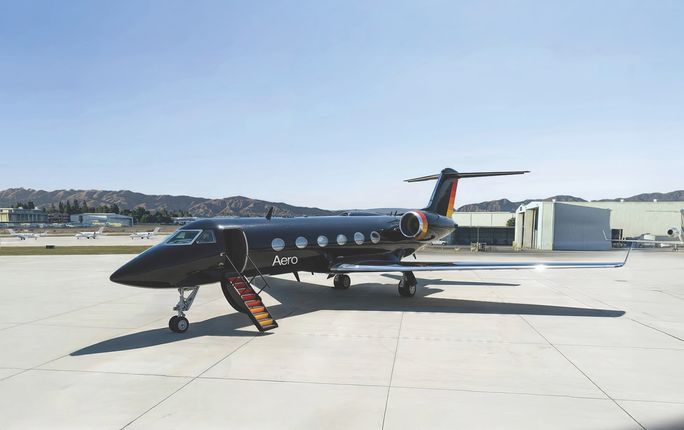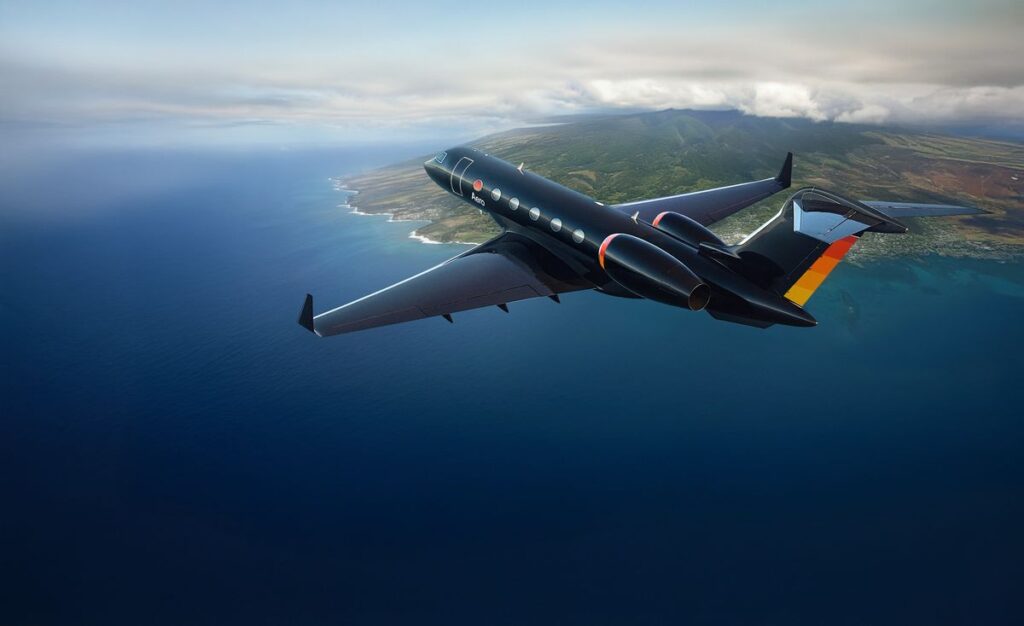
Aero,
the Los Angeles-based book-by-the-seat jet service, is redefining the premium
travel landscape with a fresh focus on travel advisors—a move that reflects
both industry realities and the shifting dynamics of luxury traveler behavior.
Long viewed as a niche product for direct-to-consumer luxury flyers, Aero is
now positioning itself as an ally to advisors who build complex, high-end
itineraries and who can bring in clients seeking the sweet spot between a
commercial first-class seat and a private charter.
Timing could not be better. As
commercial travel continues to disrupt the industry, and traditional airline
loyalty models lose their grip on affluent travelers, demand for a seamless,
personalized, and smooth travel experience has turned travel advisors into both
tastemakers and gatekeepers. For a company like Aero, which operates outside
global distribution systems and depends on curated awareness, this connection
is not just useful. It’s essential.
Emergence
of the Semi-Private Jet
Aero occupies a slender but
growing segment of the market that didn’t exist a decade ago: the semi-private
jet. It offers scheduled service on small aircraft, departing from private
terminals but sold by the seat rather than as fully rented charters. Its jets
— reconfigured Embraer ERJ-135s and newly introduced Gulfstream IVs — carry
between 12 and 16 passengers to such elite leisure and lifestyle destinations
as Aspen, Sun Valley, Napa, Salt Lake City, and Los Cabos. In November, it will
add weekly service to Maui through an exclusive collaboration with the Four
Seasons Resort Maui at Wailea, creating the first scheduled semi-private route
between the mainland U.S. and Hawaii open to the public. Its most popular
route, between Los Angeles and New York, continues to get kudos and will likely
expand frequency as the aviation company grows, says CEO and First Pilot, Ben Klein.
Initially conceived by Uber
co-founder Garrett Camp, Aero began its U.S. operations in 2021, launching with
flights to Aspen from Van Nuys Airport, a discreet private aviation hub favored
by Hollywood and high-net-worth travelers.
“The luxury starts and stops with what I call the hard product, the
airplane itself with an extra layer of luxury hospitality on top of it,” says
Klein. “And so Garrett’s vision was, let’s create something that’s more
efficient, that is just as good, if not better than most of the charter
experiences that are out there. And that’s where Aero was born, creating a
by-the-seat, very premium experience, just as good as private but for a
fraction of the cost.”

Aero Gulfstrean IV interior. (Photo Credit: J Public Relations)
Private Jet
Feel, First-Class Price
Its positioning is bold: Aero is betting that there is a sliver of the
market not being served by commercial carriers, even in their most forward
cabins and, at the same time, not fully addressed by private charters either.
The company’s proposition — to offer the private jet experience at first-class
prices — is designed to appeal to travelers who value time, convenience, and
service over loyalty program perks and points.
“Our business is both
semi-private and charter and it will always be that way… so it can go both
ways. People might learn of us through booking a semi-private seat and then
charter with us for a whole aircraft. And vice versa,” notes Klein. “We have
guests who discover us through charter and then say, ‘wait a minute, you’re
flying semi private flights.’ So there’s a lot of synergy between both
products.”
Each route is designed for
convenience and cachet, featuring short airport arrival times, boutique lounges
stocked with Erewhon-catered meals, as well as Veuve Clicquot champagne,
Starlink Wi-Fi, and flight attendants trained in European butler service. Meals
in the air include specialties from Spago, Flora Farms and Major Food Group. Aero
also offers a liberal
onboard pet policy. It’s a self-contained world of air travel that bypasses
the chaos of large airports and the impersonality of large carriers.
A
New Altitude for Travel Advisors
Until now, Aero’s marketing has
been aimed squarely at affluent direct consumers. Think: second-home owners,
executives, and leisure travelers willing to pay $777 to $5,500 per leg for
time saved and discomfort avoided. But as it expands its route system and
begins integrating hotel partnerships, the company is realizing that travel
advisors are uniquely positioned to scale the model to the next level.
“Travel advisors are a very powerful
partner for us and can help educate people about what Aero is… especially in
the communities where we want to develop more awareness,” adds Klein. “The
semi-private product is something exclusive, just by virtue of the price point,
and so I think that they’ll be able to reach a wider audience of their premium
guests with this exclusive option.”
For advisors who specialize in
luxury or incentive travel, Aero represents both opportunity and challenge. Its
model dovetails neatly with the expectations of clients accustomed to bespoke
service and exclusive perks. A Four Seasons guest booking through a preferred
advisor can now combine resort stays with Aero flights under a single
itinerary, complete with bundled amenities — private transfers, resort
credits, late checkouts, and VIP coordination.

Aero in-flight dining. (Photo Credit: J Public Relations)
Luxury
Partners Hit the Runway
That integration creates a new
type of value chain, one that advisors can own. Instead of sourcing a premium
class ticket from a traditional carrier and then the hotel separately, the
advisor becomes curator of an entire door-to-door experience. For incentive
groups or executive retreats, Aero’s smaller aircraft make customization
possible: chartered cabins can be branded, catered, and timed to client needs,
without the full cost or complexity of arranging private aviation.
The company’s partnerships
reflect that awareness. Its roster of hotel collaborators reads like a
directory of five-star brands: Aman New York, Meadowood and Solage in Napa
Valley, Four Seasons and Waldorf Astoria in Los Cabos, Stein Eriksen Lodge in
Park City, and Hotel Jerome in Aspen. The new Four Seasons Maui collaboration
extends that reach across the Pacific, offering advisors a turnkey ultra-luxury
product that seamlessly merges air and ground travel.
For travel advisors, the upside
is clear: commissionable packages, enhanced control over the client experience,
and differentiation in a market where first-class or business-class no longer
impress. For Aero, the advantage is equally strategic. Advisors bring
qualified, loyal, and pre-vetted clients — precisely the type of traveler
likely to pay for consistency, privacy, and efficiency.
Distribution:
A Balancing Act
Yet the same qualities that
make Aero appealing also create friction. The airline’s boutique nature means
it doesn’t operate on the global distribution systems (GDS) that power most
travel agency bookings. Advisors can’t simply search or ticket Aero flights
alongside commercial carriers. Reservations must be made directly through
Aero’s own digital platform or 24/7 concierge desk, a process that takes time
and limits visibility.
This puts Aero at a crossroads:
if it remains outside the GDS, it risks missing out on the global network of
advisors who depend on those systems to streamline booking and reporting.
However, joining would undermine the brand’s tightly controlled distribution
strategy and add cost to a model that already balances high service with
limited capacity.

Aero Gulfstrean IV exterior. (Photo Credit: J Public Relations)
Can-Do
Concierge
Aero’s 24/7 desk concierge
service functions as a quasi-advisor support team, capable of handling group
coordination, itinerary adjustments, and last-minute requests. For agencies
operating at the luxury end of the market, such as Virtuoso, Signature, or
independent boutiques catering to high-net-worth clientele, this personal touch
may be sufficient. The trade-off is scale; Aero is still too small to blanket
the advisor community with dedicated support, and its flights are too few to
become habitual for business travelers who value frequency as much as comfort.
The Aero option is not a mass travel option.
Aero’s focus on the
travel trade community comes as only a few players in the private jet space are
discovering that partnering with advisors can attract a new set of customers.
JSX, Aero’s lower-fare cousin and frequent competitor, has already established
ties with top travel trade networks and is taking a
different tack by integrating with the established airline ecosystem through
mileage-earning partnerships with United and JetBlue. Delta
Air Lines has integrated private jet access through its strategic partnership
with Wheels Up. American Airlines is also in the
game, offering on-demand private charter access through partners like Air Partner,
making premium travel more accessible to a broader group of flyers.
The primary
challenges for advisors at this time remain the lack of GDS integration and the
absence of accruable miles with major airline alliances. This means Aero must
win on the sheer merit of the flight experience. By arming travel advisors with
a compelling and commission-rich product that solves real pain points for their
clients—the inefficiency of commercial airports, the hassle of traveling with
pets or sports equipment, and the desire for a seamless, luxurious
door-to-destination experience—Aero is not just selling seats. It provides a
powerful tool for advisors to deepen client loyalty and increase revenue. In
doing so, Aero is leading a quiet revolution, leveraging the influence of the
travel trade to redefine who has access to private flights and how.
For the latest travel news, updates and deals, subscribe to the daily TravelPulse newsletter.

